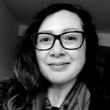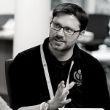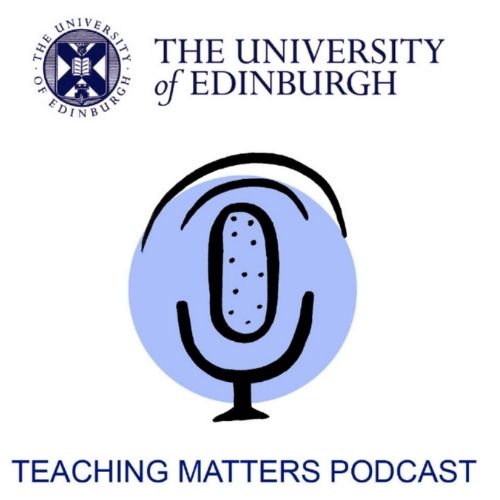
With Wikipedia turning 20 this week, Glaire Anderson describes how an experiment in using Wikipedia for learning became a highlight of the course with her students collectively contributing some eight thousand words and eighty-five references to nine articles, which have received over 772,000 views.
I have steered my students away from Wikipedia for years, envisioning my role as a teacher to show students how to carry out ‘real’ research. But this year convinced me it was time to change my attitude, and so for 2020’s Fall term I put editing Wikipedia at the heart of Stars, Robots and Talismans: Science, Magic and Medieval Islamic Visual Culture, my fourth-year Honours module.
I normally approach my undergraduate classes as workshops, encouraging collaborative experiments with digital tools, so experimenting with Wikipedia was a natural step. But unlike previous class experiments, I didn’t know the first thing about editing Wikipedia and neither did the students. And while a few of the students had studied Islamic art with me before, none came with any background in history of Islamic science and technology. Moreover, all of us were facing the uncertainties of our first online semester necessitated by Covid-19 restrictions. It was completely unfamiliar terrain that we would have to navigate together, in some cases while in different countries and time zones.
What better time for a new experiment?
Luckily for me, Edinburgh has its own Wikimedian-in-Residence, Ewan McAndrew, whose Wikimedia in Education guide (created by Wikimedia UK and the University of Edinburgh) provided a helpful overview of case studies that illustrate how other academics were using Wikipedia in the classroom. Ewan and I met and discussed my initial inspiration, which came from my colleague Stephennie Mulder’s experience with scrapping a traditional research paper in favour of Wikipedia editing in her Islamic art course at the University of Texas.
To work out the project logistics Ewan connected me with two other academics, Alex Chow, in Edinburgh’s School of Divinity and Sasha Litvintseva, in Film Studies, Queen Mary University of London, who generously shared their advice and experience. Thanks to them I was able to get the idea off and running quickly without having to reinvent the wheel. Following Mulder’s example, I asked my students to imagine they had been hired as consultants for a major museum. Their mission for my course was to use their art history research and writing skills to improve the public’s knowledge of Islamic science and the occult in advance of an exhibition. They were to research and improve an article by editing and adding new text to existing articles, adding bibliography. In addition to revising text and adding citations to existing articles I asked the students to illustrate them with images of scientific instruments and illustrated manuscripts. Thanks to Ewan, the students and I learned about a new landmark partnership between Wikimedia UK and the UK-based Khalili Collections, to release research content and high resolution images of world art masterpieces on Creative Commons licenses. The Khalili Collections encompass one of the world’s great assemblages of Islamic visual culture, including scientific instruments and manuscripts. This image component of the editing project gave the students experience with Wikimedia and introduced them to issues around image copyright, which is key for art historians.
I provided the students with a pre-selected list of Wikipedia articles keyed to our weekly course topics. Based on the topics they chose I divided them into small groups of 2 or 3 students and asked them to work collaboratively on the Wikipedia article (the groups also functioned as their autonomous learning groups, or ALGs for the term). At mid-term the groups would present briefly on what they had accomplished. Ewan set up a Wikipedia project page on Islamic Visual Culture with the list of target pages the students would be editing, and which provided helpful links to training and other resources. He also created a Dashboard page so that we could monitor and quantify the edits being made as part of the assignment. In the first week of the course he led the class through an optional live two-hour online Wikipedia training session to get the students started with Wikipedia accounts and basic skills. We recorded the session for those who couldn’t attend the live session.
With Ewan’s help, the students rose to the challenges. They organised digital meet-ups in small groups, brainstormed, discussed, and coordinated drafts. They researched and wrote new content on medieval Islamic contributions to history of science, technology and the occult, diversifying articles that had previously represented these topics mainly from an Anglo-European perspective. And since most of the students in my course were female, simply by participating in the assignment they contributed to a more diverse Wikipedia (editors have tended to be a homogenous group: white, male, 30s, from tech disciplines). Regardless of gender, all the students contributed strong research and writing skills to a more interdisciplinary Wikipedia. They brought perspectives from art and architectural history and Fine Arts to the work of editing History of Science articles, creating their own intersections between science and art. They contributed images to articles that previously had privileged text and intellectual content exclusively. Collectively the students contributed some eight thousand words and eighty-five references to nine articles, which have received some 772,000 views to date.
I was worried going into the term that the students would dislike the experiment, that they would be put off by the necessity of having to learn yet another new digital tool at an already difficult time. A few weeks into the course they had spoken frankly about the stress of knowing that what they created would be out there in the world as free and public knowledge, their sense of worry and responsibility to do this work ‘right’. I was therefore surprised at mid-course feedback that specifically mentioned the Wikipedia project as something that was going well in the course. They appreciated how the editing process had gotten them thinking about knowledge dissemination. Thanks to their efforts Wikipedia’s freely-available knowledge is now a bit more diverse and globally representative. In a year that brought pervasive systemic injustices into stark relief, our experiment in applying our knowledge outside the classroom gave us a sense that we were creating something positive, something that mattered. As one student commented, “Really love the Wikipedia project. It feels like my knowledge is actually making a difference in the wider world, if in a small way.”
 Glaire Anderson
Glaire Anderson
Glaire Anderson is Senior Lecturer in Islamic Art at the University of Edinburgh with a specialty in medieval visual culture. Her research is focused on Islamic Spain, but her teaching ranges across the medieval Islamic lands and also explores science, the occult, and visual culture. She enjoys interdisciplinary collaborations and is currently exploring mixed reality technologies to create immersive teaching experiences for art history and heritage. She writes about her digital experiments at: https://glairedanderson.com/projects/
 Ewan McAndrew
Ewan McAndrew
Ewan McAndrew has been the Wikimedian in Residence at the University of Edinburgh since January 2016 supporting the university’s commitment to developing information literacy and digital skills as a free resource available to all staff and students. Prior to this, Ewan has worked as an English and Media teacher in the Far East (Japan, Singapore and South Korea) and in Scotland. Latterly, he has completed an Information Management degree, hosted the ‘Celtic Knot’ minority language Wikipedia conference, and launched the Map of Accused Witches of Scotland website.
Want to get involved with Teaching Matters? Is there a learning and teaching topic you’d like to write about, or a project you’d like to share on the blog and/or podcast? Please contact us at teachingmatters@ed.ac.uk



[…] editing. It was through this that my sister was won over to the world of Wiki. She took the Stars, Robots and Talismans honours course run by Glaire Anderson at the University who put editing Wikipedia at the centre of her course. My sister, and others on her course, had […]
This is a very short and crispy method of understanding the subject. It is really helpful and gives confidence too.
Thanks to you